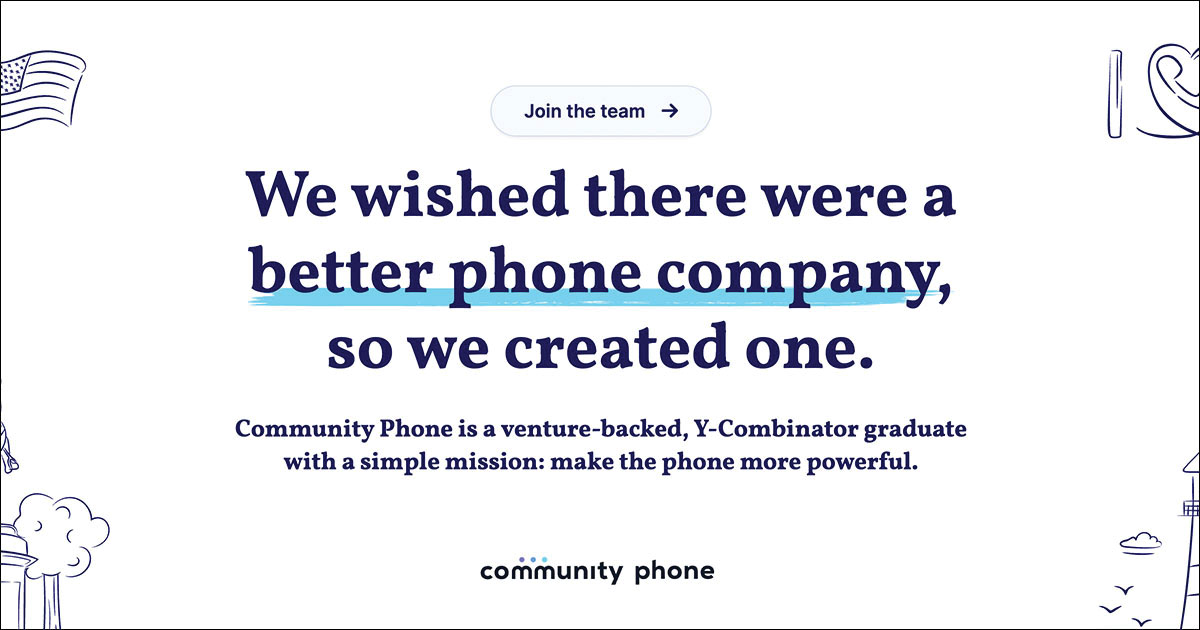Community Phone Is Expanding the Boundaries of Phone Service

Last Updated: By TRUiC Team
Community Phone has built the next iteration of the Plain Old Telephone Service (POTS). As telephone service migrates from copper lines to fiber optic, Community Phone has found a way to integrate both. This allows POTS householders to keep their familiar numbers. What can be more comforting?
This is Community Phone’s origin story.
Landline Love
Your favorite telephone number may not be 867-5309, but whatever it is, it’s likely to engender the same Tommy Tutone attachment. Anthropomorphism is a characteristic of our species. As children, we are attached to a favorite stuffed animal. As adults, it’s many things, including that telephone number that’s been in the family seemingly forever.
But the times they are a-changin’. In August 2022, the Federal Communications Commission (FCC) changed the Public Switched Telephone Network (PSTN), known affectionately as Plain Old Telephone Service (POTS) rules. Henceforth, US telecoms need not provide copper landline service. As a result, the copper line infrastructure is gradually being replaced by fiber optic cables (at higher prices, naturally).
Of course, many folks are happy to ditch their landlines. In 2003, about 95% of households had a landline. Fifteen years later, in 2018, that proportion had more than halved to around 40%.
However, while the old copper lines are falling into disrepair and losing reliability, the telecoms haven’t completely gotten around to putting fiber optic lines in their place. That poses a problem for those who’d like to keep their POTS.
Says James Graham of Community Phone: “It is too hard or impossible to get service to your landline phone today.” James Graham is the founder and CEO of Community Phone. He’s been into telecommunications for a while, having founded Caffeine Software, a company that boosted the speed and privacy of iPhone apps. James is a graduate of Y Combinator, a Forbes 30 under 30 member, and has been awarded a Thiel Fellowship, which came with $100,000 in 2017.
“So Community Phone is a phone company. We have SIM cards, and we run a nationwide network on top of the big nationwide networks that exist. So we send you a phone [and] SIM card in the mail, you plug it in, you get wireless service. When you call in, you get somebody who is happy to help you. So it's a friendly phone at its core.” Graham says. Community Phone allows you to keep your landline telephone and number.Its technology simply uses a cellular network instead of a copper line network.
James says his team started out wanting to provide better customer support for cell phone plans. Along the way, they discovered that many people still preferred to have their POTS number. Thus, Community Phone was born. The way to success was not all paved in gold.
Product-Market Fit
James says the toughest challenge is “getting to product-market fit … The only thing that matters is whether or not you find a really painful problem for a group of people that other people are not solving.”
In a twist of Emerson’s “better mousetrap” maxim, James expects that with the right product, customers will be lining up outside the door.
When asked about his approach to problem-solving, James is quick to deny he is particularly unique, although he says “asking very simple childlike questions” is one way to guard against succumbing to a herd mentality.
He sees a difference between attempting to find the solution to a problem and creating the solution and advises focusing on the former initially.
Testing demand is also vitally important. One aspect of that is getting feedback.
Says James, “There's no replacement for going and talking to your customers … more than half of your time should be talking to customers … and showing them everything and seeing their facial reaction and [asking] can you commit to pay right now for that? Which is an uncomfortable thing to ask another human. So you need to ask it. There is absolutely no replacement for talking to customers or talking to users.”
Startup School
James also discusses his experience at the startup school Y Combinator.
Perhaps the most valuable aspect is being able to meet new people and establish relationships. He reflects on the influence that others have on one’s life and says that, to some degree, “a great estimation of destiny are (sic) the people that you spend time with.”
He says that Y Combinator (YC) provided nuggets that helped build his confidence as an entrepreneur. A good example was the disclosure that the companies that received the most funding on demo day were not always the ones that ended up being successful.
Support also came in the form of YC's honesty and intellectual integrity in recognizing the underdog story. And interaction with other founders allowed one to see their flaws and missteps. James found this very motivating, despite feeling isolated among the other participants, who were mostly advanced technology outfits. In the end, YC Combinator was a gratifying experience.
A founder needs to shift roles as the organization scales. James notes that “there comes a point in the organization where you move from being a player to being a coach. And that's a very difficult transition, usually. And what's hard about a growing organization is keeping that spirit alive.”
When asked for his number one piece of advice for early-stage entrepreneurs, James returns to the theme of product market fit, which boils down, he says, to solving a problem that's really painful and really frequent for a lot of people.
Tell Us Your Startup Story
Are you a startup founder and want to share your entrepreneurial journey with our readers? Click below to contact us today!





